Something different
Weekends can be pretty slow for news and rumors, but I still want to add content. So I’m going to try a few history lessons for the folks out there. I’m in the process of collecting various Canon cameras. I’ll give a brief history lesson every so often about each of them.
Canon’s first SLR Camera Body
I finally acquired one of these historical Canon camera bodies yesterday.
Released: March 1959
Discontinued: August 1959
Production: 17,000 Units (Compared to the Nikon F which shipped 862,000.)
Weirdness: Bottom winder. You could wind pretty fast, but don’t try to use a tripod!
Feature: Removable Pentaprism
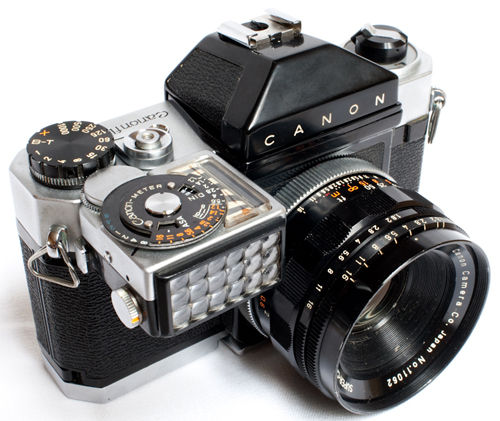
You can read more about the Canonflex here: http://www.cameraquest.com/canonflx.htm
cr
|
When you purchase through links on our site, we may earn an affiliate commission. Here's how it works. |


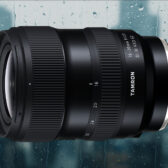
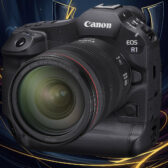
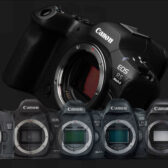

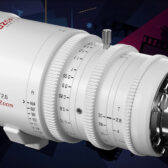


That’s a pretty sweet looking SLR.
That light meter is big.
Does everything work on it?
Oh yeah it works. I spent a few dollars getting the shutter going again. The light meter is also about two stops off. Great condition otherwise.
Could the light meter be off because of the battery voltage? I know most of those type cameras used Mercury batteries, and modern equivalents aren’t quite right. Adapters are sold to correct and regulate the voltage.
The guy that fixed the shutter said the “cells were weak”. Nothing could be done about that. I might try to find a better working meter.
I like the “history lesson” bit. Keep ’em coming. It’s a nice touch seeing where the industry and photogs have come from.
Dang, you got yours already?? I’m on the pre-order list… Now we can start complaining about autofocus! ;)
That 50mm looks well built, I guess in some ways we have gone backwards since then!
Thats the first one of these I’ve seen. The older cameras like this are pretty rare.
Every time i come here I am not dissapointed, nice post
Cool! I love the older cameras, I like the whole ritual of film, shooting the roll, developing it myself and pouring over the negs and then hitting a zen like state while dodging and burning.
I sometimes take my Mamiya M645 Super out on photo walks just to see the expressions on peoples faces on seeing something so funky.
Nice old camera. I had an old Nikon F, and Nikomat FT pass through my hands a few months back, they weren’t as nice looking though. Have you tracked down a WLF yet?
*yawn* no direct print button? ;)
no really, awesome thing, i envy you for this one
Wonder what the noise characteristics is like – any good at ISO6400?
No Direct print button, what a shame – makes it worthless.
About the meter, is it a Cds or selenium meter? All meters of a certain older vintage use selenium light sensors which require no battery power to both sense the light and power the meter’s moving parts. If Cds, it requires a battery, the voltage of which, as a previous poster pointed out, will affect meter accuracy. Obviously, that is irrelevant with the older battery-less selenium models. So, if the meter is a selenium one, the only possible reason for gross meter innacuracy is the condition of the selenium cell itself, and it is not amenable to a “fix,” but requires replacement instead.
Regards
I can’t imagine what the Moire and Aliasing must look like on this old thing… and you just know that even back then, Canon had the solutions to all those problems, but they were just holding out to sell us the next 1960 version of the same camera.
…and the sarcasm stops ;)
That’s an awesome find, man!
19-effin’-59!!! And it looks a better camera than my old Minolta from 1980. It actually looks like they designed to be taken into a War-Zone. Especially that lens. Nice.
Are you keeping it in a safe-deposit box?
I think I would be.
No battery is required. Age kills the cells I’m told.
Looks like canon have come a long way these 50 years. I wonder if 50 years from now, we’ll look back at the 7D or 1D Mark IV and say, “wow, 18 MP back then, how cute”
The sheer size of the metering lens array tells me it is the selenium type of meter. It could be that the selenium photovoltaic sell is weak or dirty, or that the meter’s magnet has lost some magnetism over the years. In either case, open it up and look for a means of adjusting or calibrating it. It might have an adjustable or replaceable resistor in the circuit.
It’s definitely a selenium cell meter. The CDS meters didn’t require all of that surface area.
It’s certainly selenium, like the meter on Leica M3 (which attached to hot shoe). Mine is also not working anymore, I’ll see if I can repair it. The advantage was: no batteries, some say better for colors (at that time).
Wow, it’s amazing how similar this looks to the rest of the whole pre-electronic Canon slr line!
The dual lens aperture rings are confusing: which of the two aperture-numbered rings actually turns, and why are there two?
Jason.
at least the print button was hidden back then…
Seriously …I really like how the old mechanical lenses were build and how they looked…
Were did you find this gem? I’m a photo student that is collecting all the cool older cameras I can find but this one has eluded me for quite some time now. Beautiful camera.
I promise you that the meter does not need a battery.
I have one of each body in the C-flex series. The original version, the one pictured above (which I call the R1000) with meter, the R2000 with meter, the RP (and a second one in black)with meter, Canon RM, Bell & Howell RM. The RM version had the built in meter while the others used an optional clip on meter. The R2000 meter had an extra setting for the 1/2000 shutter speed which the other clip one meters lacked. I also have all the lenses from 35 to 600mm and a number of accessories. I’ve added the 19 FL-R and 28mm FL lenses to get wide angle coverage.
The R lens mount is the same as the FL and FD mounts. The difference is in the operating system for each family. R lenses have two prongs on the back. FL have only one. FD have two but arranged differently. R lenses will mount on later cameras. FL lenses will mount on C-flex cameras. FD lenses are either impossible to mount or will cause damage to themselves or their host. When using lenses on cameras they were not designed for there’s no automation and everything must be set by hand.
@ Jason
I don’t see any continuity of style between this and later Canon film cameras. the RM version was totally different to the one pictured here.
The two apeture rings were a cross between a pre-set and an automatic lens. One ring let you set the desired value but the lens only closed down during the time the shutter was open. The second ring actually did close down the lens to whatever value you selected and kept it there until you changed it. This served as the depth of field preview.
The long teles used a bellows focusing system had had no auto diaphram. They came straight from the rangefinder line where they were used with a mirror box. Because of the bellows focusing, these long teles can be used on today’s EOS models with a glassless EF-FD adapter ring and they will focus to infinity. There were also economy versions of the 85, 100 and 135 lenses that were also RF lenses with different mounts.
I have a camera just like yours without the flash on top. Any idea what year it is and what it is worth? It has two lens sizes (50mm & 135mm). It was my Dad’s (he’s 82). He used an Argus light meter. I don’t know if he ever had a canon light meter with it. There is also an additional part that fits on the back of the camer to look through. I’m not sure how it is used. Oh, I just figured out where it goes. The eye lens removes from the top and the additional longer eye lens fits in and you can look through the top of the camera. I’m glad I found your site because I have had this camera over 10 years and never checked to see how it worked. What a great site and very informed people on the site. Thanks everyone.
By the way, I noticed your eye lens attachment has a flash bracket. My camera does not. Is that the only way to use a flash with this camera?
There is also a silver ring that screws into the lenses. Do you know what it is for?
i would love to have one!
Your camera is the original model of the Canonflex. It was introduced around the same time as the original Nikon F. Nikon ate Canon’s lunch back then because Canon only had a 35mm f2.5, a 50mm f1.8, and a 135mm f2.5 preset lenses at launch. I’m not sure if the 58mm f1.2 was available at launch. Poor lens choice plus the folding trigger wind and other oddities made the Nikon the obvious choice.
That said, the Canonflex is a great camera. It’s built like a tank, the shutter is very reliable and the lenses are quite good although presets are a pain in the rear to use.
It has a selenium meter. No battery. The array of plastic “lenses” distributes reflective light. There should be a flat translucent white plastic incident light slip on cover with the meter. In your photo, the meter is not mounted correctly on the body. The shutter speed on the meter should correspond with the shutter dial setting. Either way, though, the meter will not be accurate, assuming it is still working.
As to the removable prism, somewhere along the way, someone grafted an accessory shoe from a much later vintage camera onto it. Too bad, because it mars the original. Canon made a bayonet mount accessory flash holder that mounts onto the bayonet surrounding the PC contact at the end of the camera near the rewind crank.
Addendum to the previous comment:
The Super-Canomatic lenses did indeed have an automatic diaphragm, but you had to use the second aperture ring for DOF preview. Still a pain.
Also, I forgot the 200mm f3.5 was available early on. Other lenses including the 85mm f1.8 and the 100mm f2.0 and f3.5 showed up later, but oddly there was not a lens wider than 35mm.
Cheers.